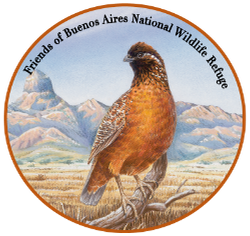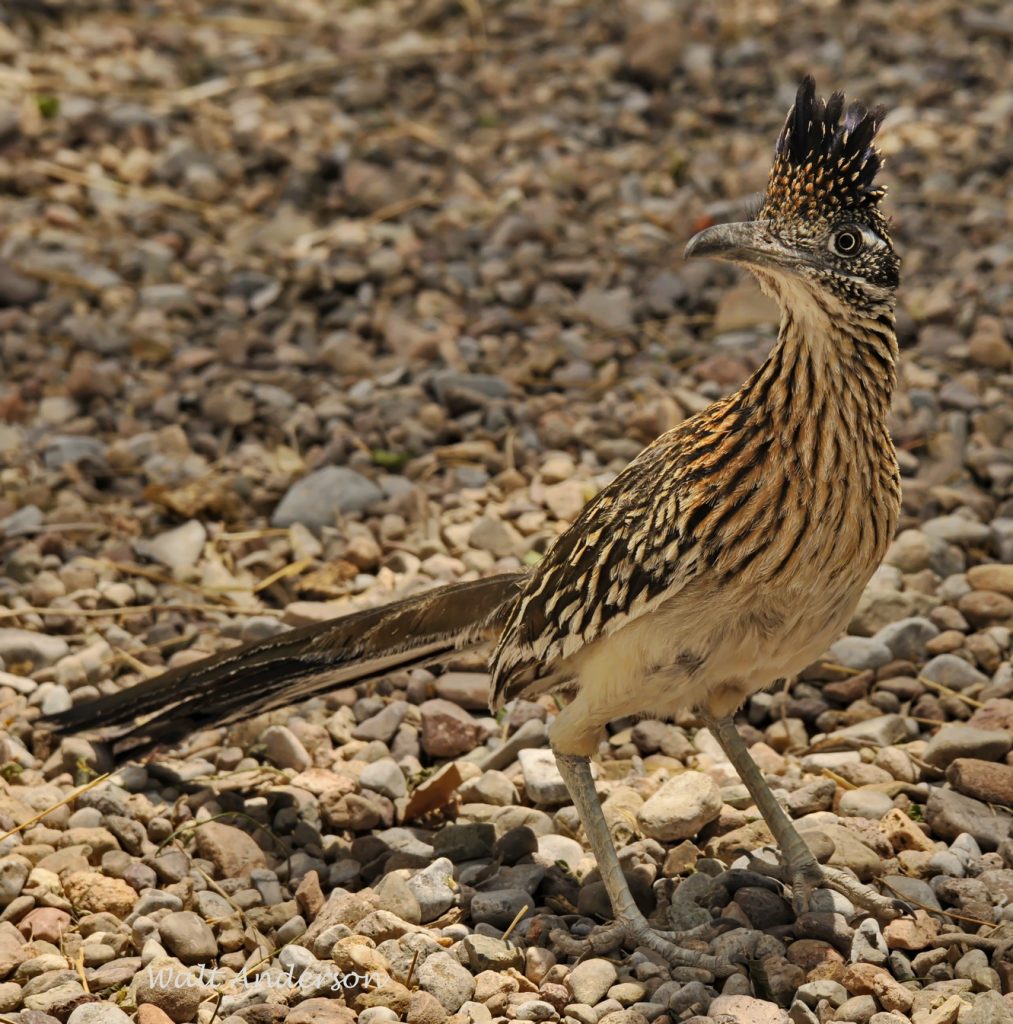
Among Friends, Roadrunner Rhapsody, by Walt Anderson
The headquarters area of Buenos Aires National Wildlife Refuge is an oasis for wildlife, and many critters have become habituated to the presence of humans—hence easy to watch. Among these watchable wild ones is the Greater Roadrunner, stalking what it considers lesser creatures across the lawn and grassy edges.
The roadrunner is probably best known as the crazy bird that always seems to foil Wile E. Coyote’s attempts to use various Rube Goldberg devices to capture it. The cartoons took great liberties with physics and natural history (including the “beep beep” sound, which no self-respecting roadrunner would say), but in the cartoon universe, anything goes. The REAL roadrunner can’t outrace a Coyote or flatten one with a steamroller, but it certainly one of the most interesting birds of the American Southwest. Let’s take a closer look at this species, as its true character is sometimes nearly as improbable as that of its slapstick caricature.
#roadrunner #greaterroadrunner #wileecoyote #geococcyx #cuckoo #zygodactyly #apterium #tyndallscattering #cursorial #rocksquirrel #collaredlizard #rattlesnake #hummingbird #biodiversity

The Greater Roadrunner (it has a Lesser cousin in Mexico) is known to science as Geococcyx californianus, which roughly translates as the “ground-cuckoo from California.” It is a member of the cuckoo family, though its range extends from southern California almost to the Mississippi River in the southern tier of states and well down into Mexico. It is a characteristic dweller of desert and chaparral, though it occurs at higher elevations until it hits denser montane forests, where it is rare. In Arizona, it is widespread below the Mogollon Rim, uncommon above it. It’s New Mexico’s state bird.
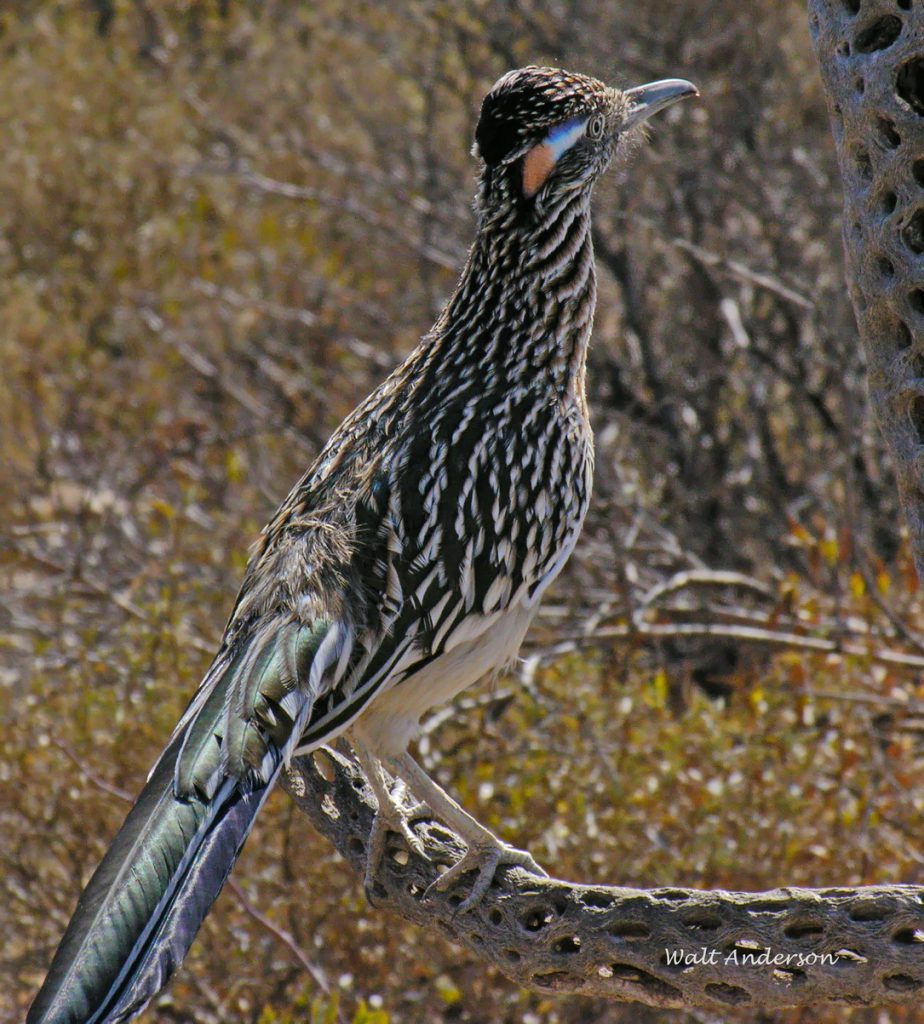
Also known as the Chaparral Cock, Snake Killer, War Bird, and Medicine Bird in English, it is called Paisano or Correo del Camino in Spanish. It is the subject of Native American mythology, sometimes symbolizing strength, endurance, courage, and good luck. Note that unlike songbirds, it has two toes directed forward and two toes extending back—a condition known as zygodactyly. This gives it distinctive X-shaped tracks. Several tribes believe that you or evil spirits can’t follow it, as the X doesn’t indicate direction of travel. I suspect that the sharp rocks it runs over help it keep its toenails trimmed; they serve as its X-files.

Close views of the roadrunner show its gorgeous, iridescent plumage. Bare skin behind the eye adds surprising color to its face, and this patch is used both to intimidate rivals in territorial clashes and to impress a mate. This trait must be an ancestral one in the cuckoo family, as it also occurs with various shapes and colors in the Neotropical ground-cuckoos, the Asian ground-cuckoos, the couas of Madagascar, the Guira Cuckoo of South America, and some of the malkohas and coucals of Africa and Asia (see photographs of all species at https://avibirds.com/cuculidae-family/).
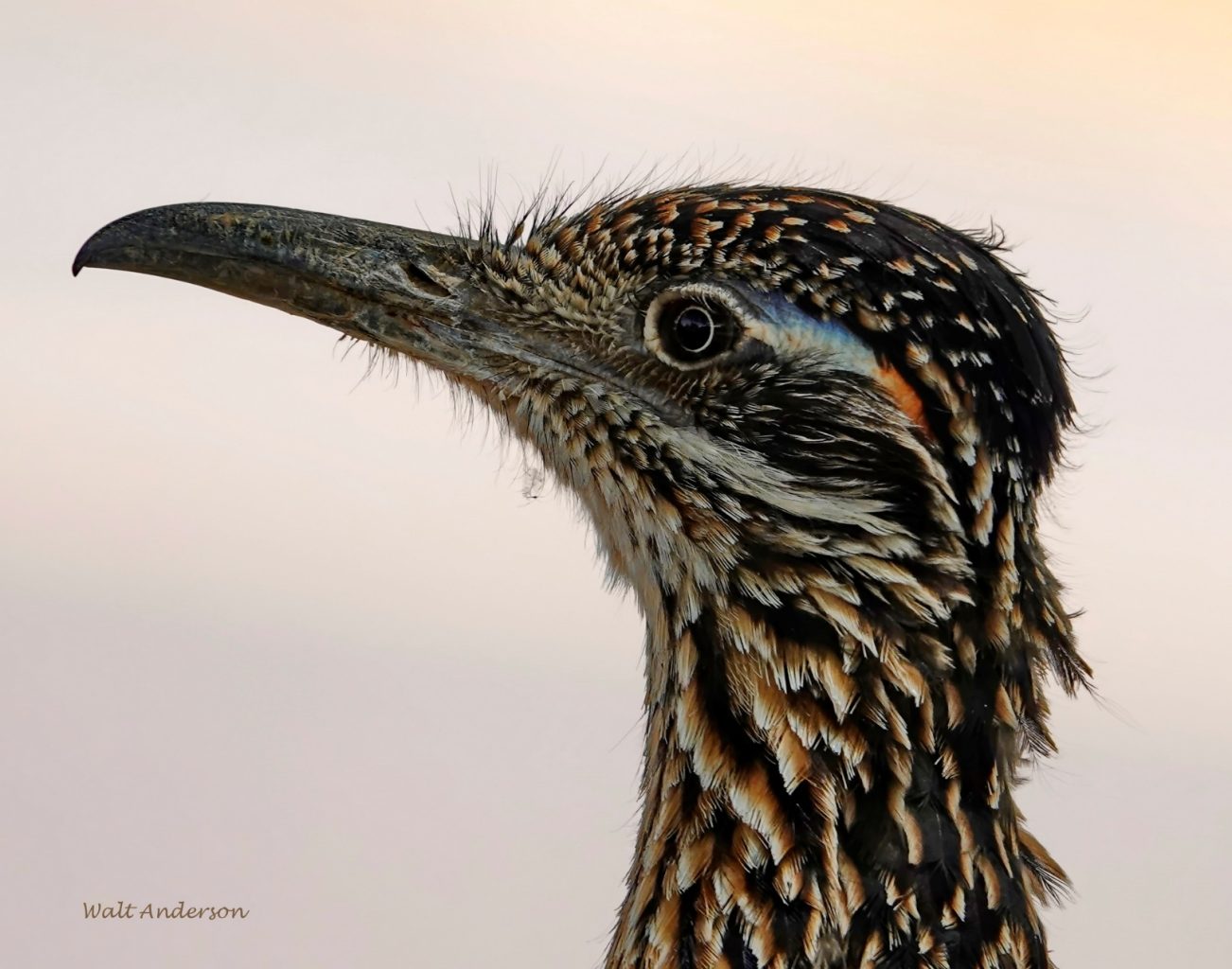
What I am calling the bare patch of skin behind the eye is elegantly described scientifically as the “postorbital apterium.” The orange-to-red posterior portion is colored by pigments, while the blue is caused by Tyndall scattering, an optical effect when light is scattered as it passes through a medium of small particles, a colloid in this case. When we see “blue smoke” from the exhaust of a motorcycle or motor boat, that is caused by the Tyndall Effect in dusty air.
A close view of a roadrunner’s face reveals its bristly character. It also shows the bird’s remarkable eye. The eye is enclosed in a pale orbital ring, and the dark pupil is surrounded by a strange, straw-colored narrow ring in an otherwise brown iris.
Also notice the powerful hooked beak.

The roadrunner is an opportunistic omnivore that pursues its prey with rapid dashes followed by fairly precise seizing with that wicked beak. It can fly, though it specializes in running, which makes it cursorial (when I first heard the word, I thought the speaker was saying “Curse Oriole.”). Ah, homonyms.
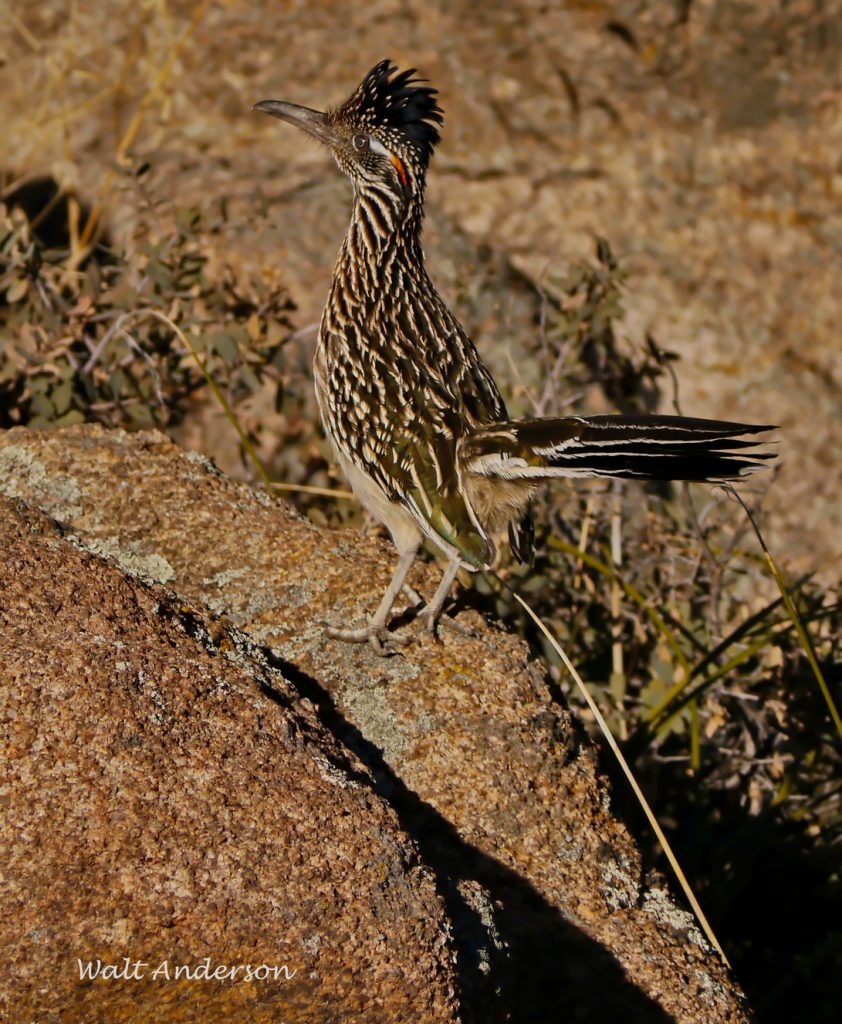
A hunting bird often makes a short dash, followed by a pause in which the tail is raised slowly. It’s comical to watch this tail-raising behavior, as well as the alternating lifting and depressing of the crown feathers. These birds have so much animality (“personality” is a bit anthropomorphic)! Notice the zygodactyl feet, that characteristic X-factor.
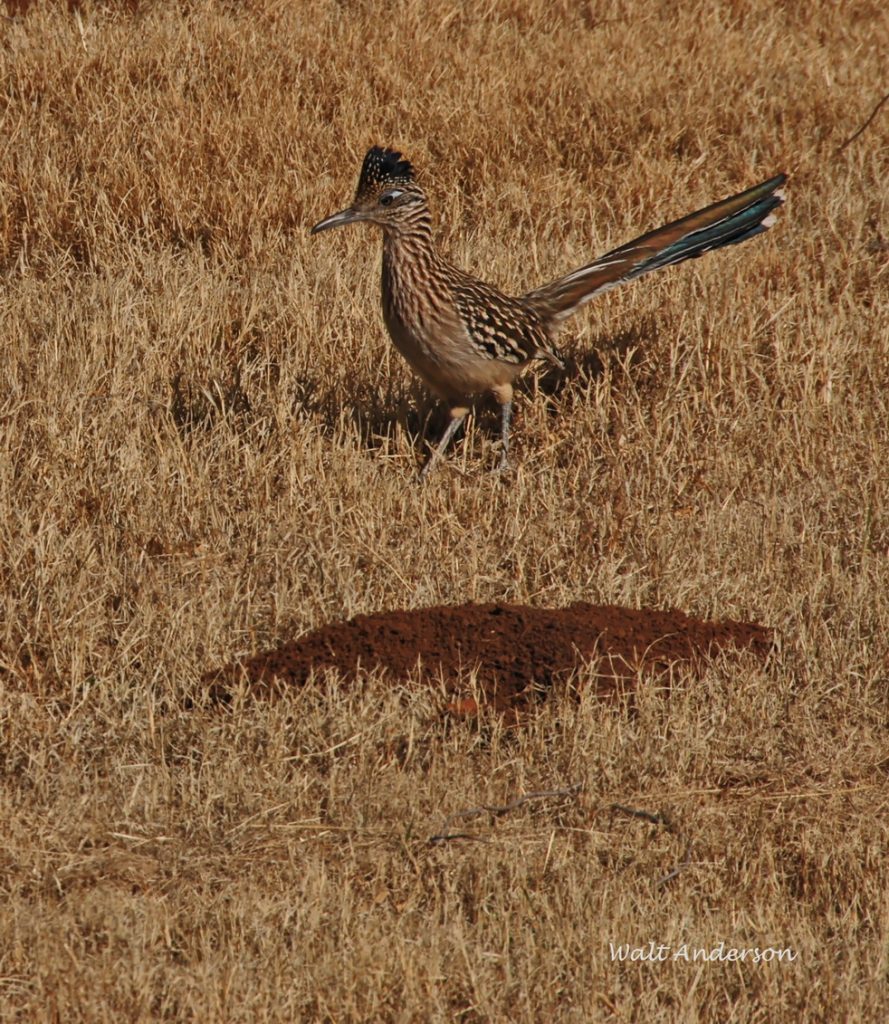
While in the warmer months, insects are a major part of a roadrunner’s diet, the birds can take small mammals, even pocket gophers. Best to keep one’s whiskers underground!
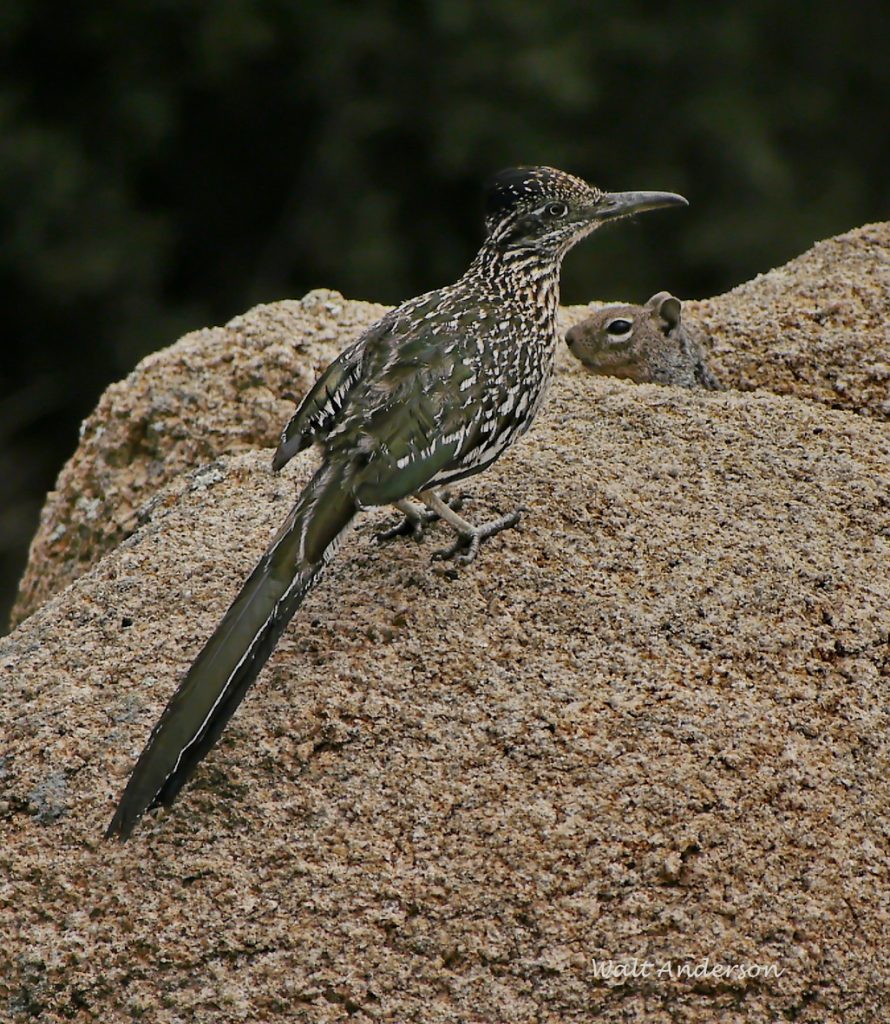
This Rock Squirrel looks suspicious, but he probably hasn’t read the literature, which identifies his type as suitable prey. He should pray that this bird isn’t hungry.

We’re lucky that these dinosaurs are much smaller than some of those found in the fossil and subfossil records. I think that even Marvel’s Ant-Man would think twice before confronting this bird.
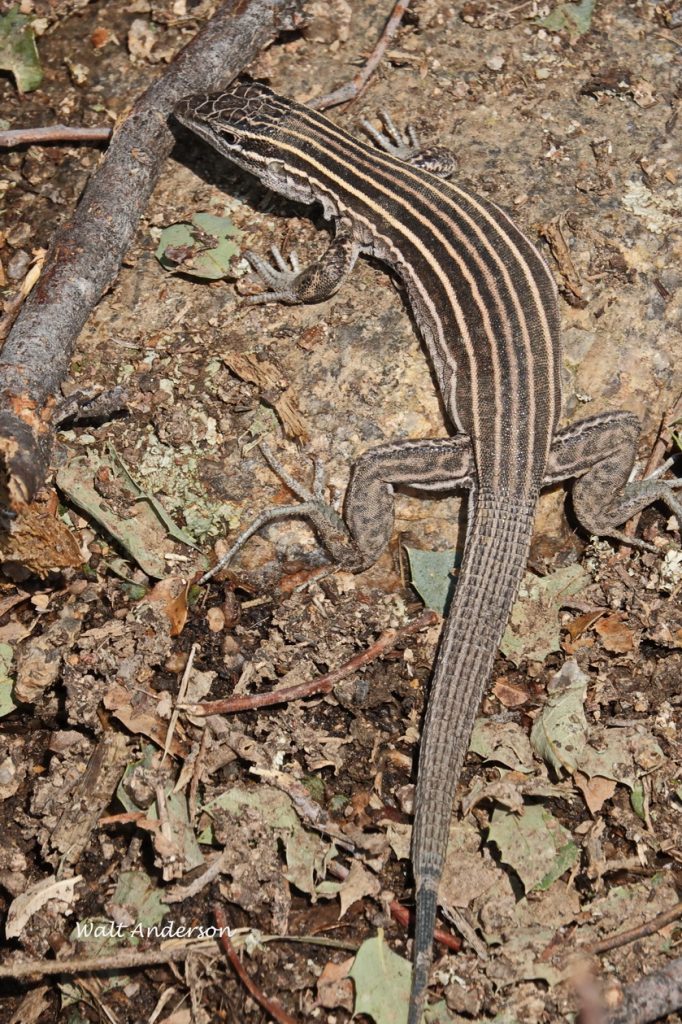
Lizards like this whiptail are common prey despite their speed. Roadrunners will even eat horned lizards, careful to swallow them head-first with dorsal side up to avoid being impaled by all of those wicked spines.

This female Eastern Collared Lizard would make a substantial meal, though I personally think she is too pretty to eat. But I am not a hungry roadrunner. Larger lizards are beaten on the ground until the bones inside are disarticulated, making swallowing easier.
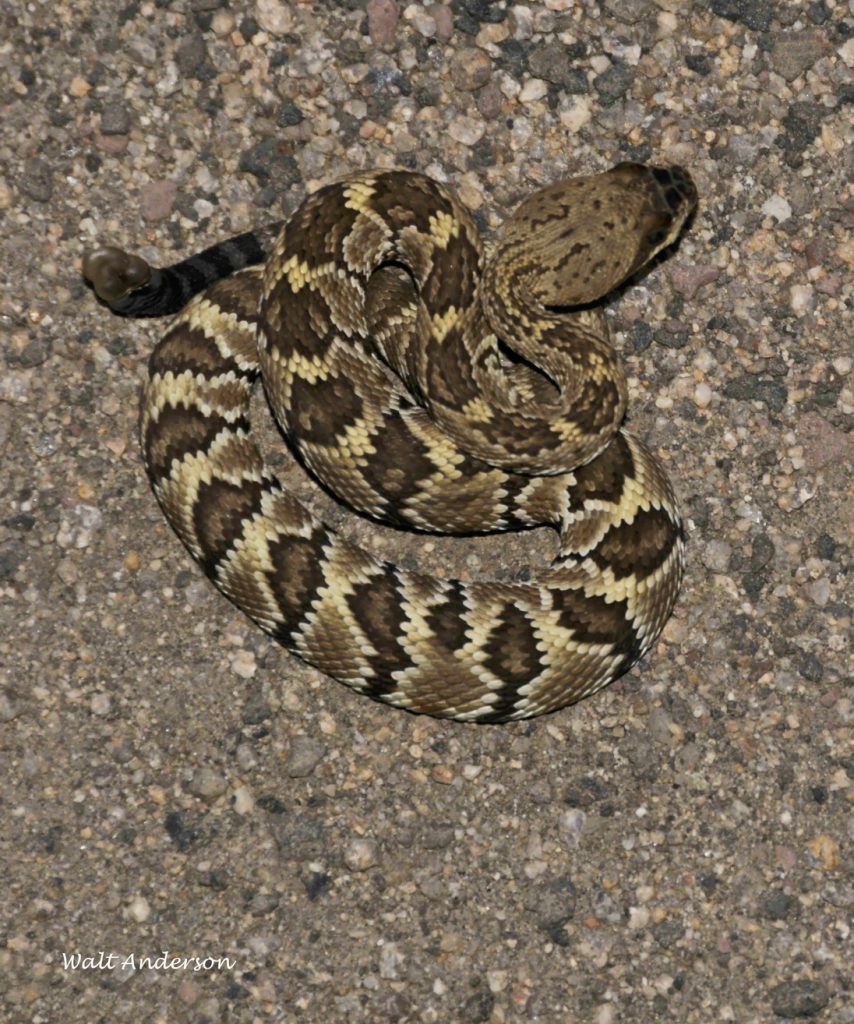
Roadrunners are justly famous for the ability to capture and eat rattlesnakes. You may have seen the action in nature videos, where the bird begins circling the reptile, flashing its wings (perhaps to confuse it), and darting in to strike the snake’s head repeatedly until the snake is incapacitated. A young snake like this Black-tailed Rattlesnake is especially vulnerable.

Perhaps most surprising is this predator’s ability to catch small birds. One day I witnessed a roadrunner approaching a hummingbird feeder. Suddenly it shot into the air and captured an Anna’s Hummingbird! Apparently this has been observed enough times to make it clear that this is one of the roadrunner’s predation strategies. Impressive! Sometimes you have to eat on the fly.

Insects, even stinky ones like beetles and crunchy ones like grasshoppers, are often part of the roadrunner’s diet. Birds of the World mentions a scientist who followed a habituated (hence unafraid) roadrunner around one day in San Diego and cataloged what it ate: 17 beetles, 8 wireworm larvae (a beetle, hence good grub!), 12 grasshoppers, 1 Jerusalem cricket, 9 true bugs, 1 scorpion, 1 spider egg case, 1 lizard, 3 seeds, and 2 grass blades. Another bird in Texas ate all of these in one day of foraging: 263 hopping grasshoppers, 73 flying grasshoppers, 17 scorpions, 28 sowbugs, 7 caterpillars, 3 chrysalids, 14 angleworms, 39 moths, 1 butterfly, 14 centipedes, 16 spiders, 2 tarantulas, 3 walking sticks, 3 small toads, 3 horned lizards, 6 green lizards, 8 small lizards, and 1 mouse. Now that’s a balanced diet!

Though fresh protein is nice, the roadrunner eats plant material, like prickly pear fruits, when needed. These birds get most of the water they need from their food (especially from a juicy mouse or lizard). However, they drink as necessary and have a number of physiological adaptations to deal with water and salt stress. They excrete concentrated salt, for example, from nasal glands.
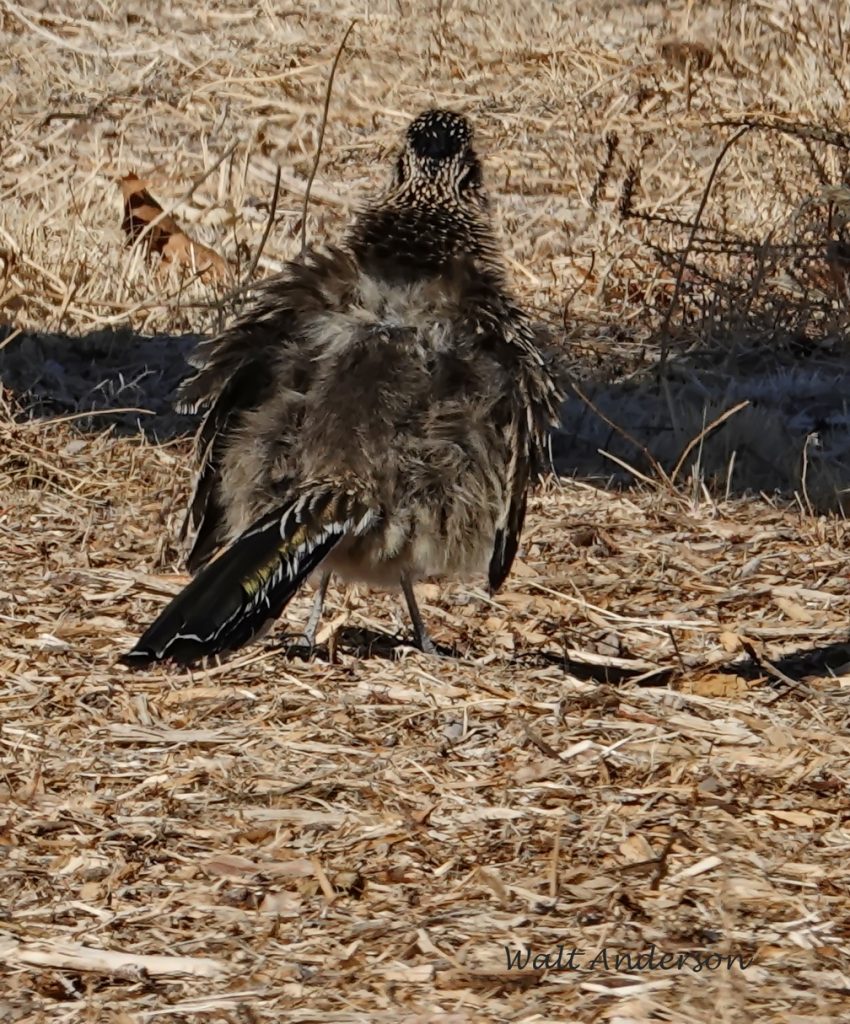
Roadrunners are monogamous, both sexes defending their all-purpose territory and sharing parental duties. Males take the night shift to incubate the eggs or brood the newly hatched, naked (altricial) young. Except for an incubating male at night, adults may go into mild hypothermia on cold nights, reducing their body temperatures from their normal 40°C to 34°C and thereby conserving significant energy. Wish we energy-wasteful apes could do that! Another energy-saving behavior is to turn one’s back to the sun and fluff out the feathers to expose the black skin as a solar-collector.

Like most birds, preening one’s feathers and stretching one’s muscles are important maintenance behaviors to improve fitness. And maybe it gives them a chance to show off that gorgeous plumage!

Unlike some critters, roadrunners know when to come in out of the rain. During a downpour, this roadrunner took refuge under an overhanging rock. When one watches a roadrunner for any length of time, one has to think that these are pretty smart birds!
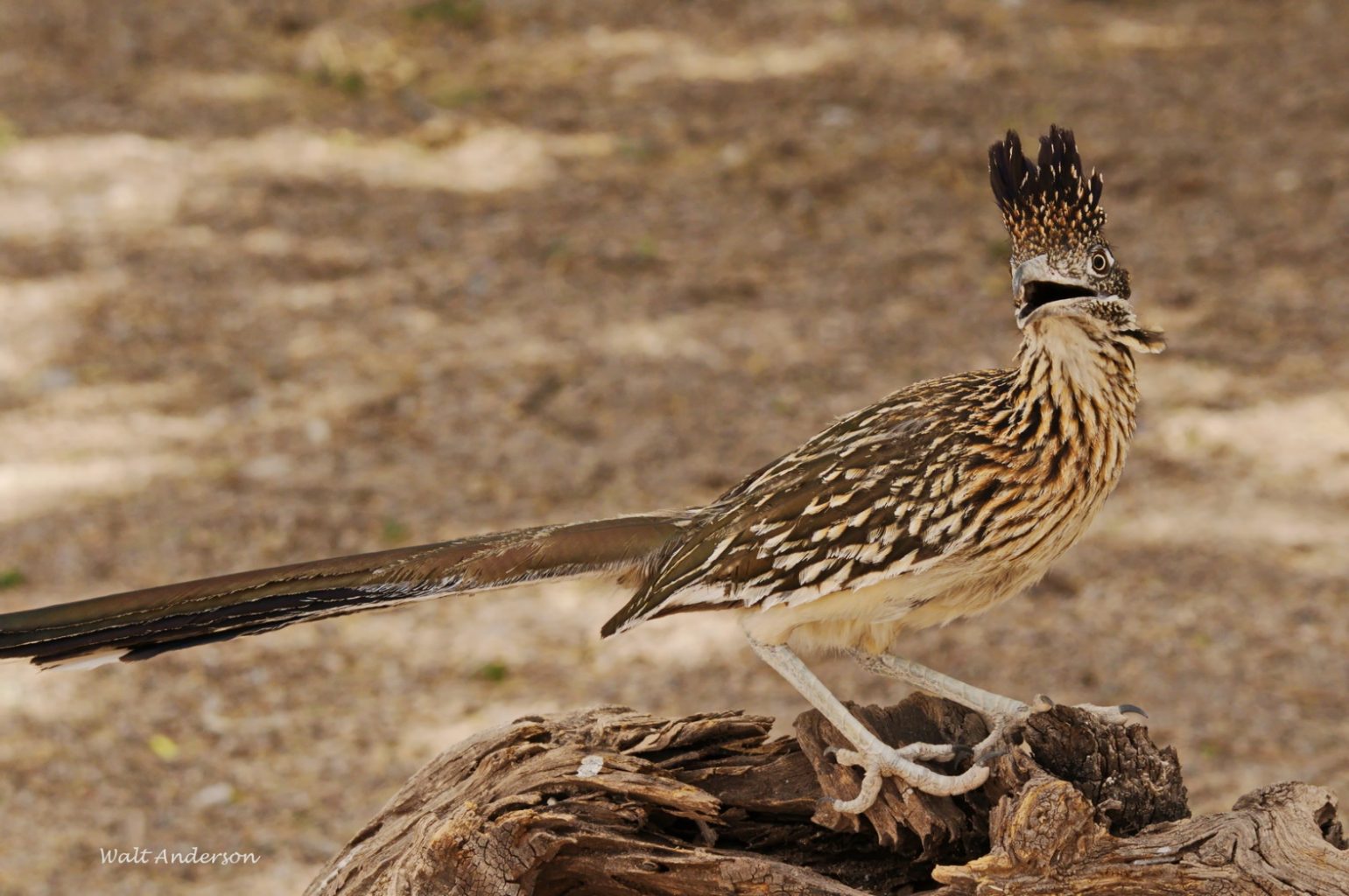
If you’ve read this far, you now know some of the REAL natural history of a truly amazing, if somewhat bizarre, bird. They are vulnerable to domestic and feral cats and, yes, Coyotes. Some people shoot them illegally under the mistaken impression that they are a threat to gamebird populations (they are more likely to follow a quail covey to get the insects flushed by them than to go for a quail itself). Many are killed on highways (if they fly, it’s usually too low for safety against a speeding car or truck). And, of course, they have suffered from loss of suitable habitat, as humans destroy native vegetation to replace it with buildings, roads, and artificial yards.
We know now that natural biodiversity—birds, bees, and blossoms—contribute significantly to our mental and emotional health. If we were just slightly smarter than a roadrunner (the data on that are not yet in), we would protect as much as possible of the natural world while enhancing our own wellbeing. Let’s convince our leaders to prioritize that and also do our parts as individuals to keep this world livable for both people and wildlife.
